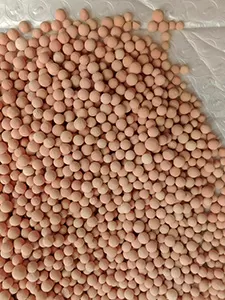3A molecular sieve adsorbs gases through a combination of size exclusion and polar interaction, making it highly selective for specific molecules. Its crystalline structure features uniform 3-angstrom pores, which act as a molecular filter: only gases with a kinetic diameter smaller than 3 Å (such as water vapor, 2.8 Å) can enter the pores, while larger gases (e.g., methane, 3.8 Å; oxygen, 3.5 Å) are excluded.
This size-based selection is enhanced by the sieve’s polar surface, derived from its aluminosilicate composition.

Polar gas molecules, particularly water, are strongly attracted to the sieve’s cationic sites (usually potassium ions), forming electrostatic bonds that stabilize their adsorption. This dual mechanism ensures efficient removal of moisture from gas streams, even at low concentrations.
In industrial systems, the packing of 3A molecular sieve in columns maximizes contact with the gas flow, allowing thorough adsorption. As the gas passes through the sieve bed, water molecules are trapped in the pores, while larger or non-polar gases continue unimpeded. Regeneration—heating the molecular sieve to 200–300°C—breaks the electrostatic bonds, releasing adsorbed water and restoring the sieve’s capacity for reuse.
This principle makes 3A molecular sieve indispensable in applications like natural gas drying, where removing trace moisture prevents pipeline corrosion, and in refrigerant purification, ensuring system efficiency by eliminating water-induced ice formation.

